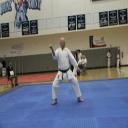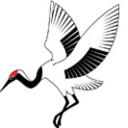Yahoo Answers is shutting down on May 4th, 2021 (Eastern Time) and beginning April 20th, 2021 (Eastern Time) the Yahoo Answers website will be in read-only mode. There will be no changes to other Yahoo properties or services, or your Yahoo account. You can find more information about the Yahoo Answers shutdown and how to download your data on this help page.
Trending News
Would you agree that soft or internal martial art styles are not for complete beginners?
I get this a lot since I started training in the martial arts with aikido; mainly from practitioners of other arts. Not the close-minded, my-style-is-better-than-you types, mind you, but senior martial artists with decades of training under their belts. The thinking seems to be "train first in a hard style, then refine it with a soft one."
Actually I get this from many senior aikidoka as well. Mainly because practically all of Ueshiba Morihei's students were already prominent martial artists in their own right before taking up aikido, primarily in judo, aikido, kenjutsu, and classical jujutsu. So, early aikido assumed a certain degree of martial skill.
Also, in a traditional Daito-ryu school - this being the root of aikido - young beginners would first receive instruction in Daito-ryu jujutsu (the emphasis here being grappling and hard, linear striking), before progressing to Daito-ryu aiki-jujutsu (a bit like a "harsher" version of aikido with extra atemi), and eventually Daito-ryu aiki-no-jutsu (which looks like an extra-soft version of aikido.)
I've been fortunate enough to have trained under many instructors with backgrounds in various other arts, so I've been exposed to various concepts that are not usually included in mainstream aikido curriculum (everything from throwing a proper punch to ground fighting to knife techniques); I've also tried taking up kendo and judo (both on hold due to time constraints); so, I like to believe that I am not exactly unfamiliar with the harder and more external concepts of martial arts. (Feel free to replace " ... like to believe ... " with " ... like pretend ... ").
Still, I'm still wondering whether or not my training is, for lack of a better word, complete. So that's why I wanted to know other people's opinion on this matter: If somebody wants to train in a martial art, is an internal and/or soft art a valid starting point? Or should he/she consider training first in an external and/or hard style first?
Perhaps my concern is more along the lines of: Can the training methods of a typical, or mainstream soft/internal martial art class be considered 'complete'?
For example, the mainstay of soft or internal arts is usually understood to be redirection of attacks; meeting a hard technique with a soft application of force. But before learning how to properly redirect a punch (again, for example), a student must first learn how to properly throw a punch, and learn how it feels to be on the receiving end of one, no?
The way I understand and have experienced it so far (could be wrong though) is that schools training exclusively in purely soft arts do not generally include training of basic, hard techniques within their curriculum and training regimens.
Personally, I've had a little bit of help in the form of training partners with experience in other, harder arts - mainly karate, shorinji kempo, silat, and judo; along with one particular instructor who occasionally takes the time to remind
16 Answers
- LiondancerLv 71 decade agoFavorite Answer
I definitely do not agree. In China they start their 4 year old kids on Chen Tai Chi. Granted they do not grasp the internal part until they get into their mid - late teens at the earliest and a lot of them never do get it but they are familiar with the moves and their bodies are conditioned for the Tai Chi. Not all martial art condition the body the same way. When I started training in other martial art I always found a few more muscle groups I haven't used yet or lacking flexibility to do certain techniques.
Martial art is not for everybody but the kids that start martial art, even internal martial art are still better than those who start later in life even if they do not get a full grasp on the internal part. Those wo are really good in internal martial art usually also started when they were 4 years old and I do not know anybody who started later in life who could match their skills.
Good martial art seems to be like fine wine. It gets better over age and you can not rush it either. It simply takes time and patience and needs to grow with you.
- ?Lv 61 decade ago
You know, this is a fascinating question... And it's also one I can't objectively answer.
I started with USSD Kenpo Karate when I was very young, so I started with a hard style (though, to be fair, it wasn't until years after I left I realized how poor the instruction was). I did a number of different martial arts, most of which would be hard styles.
When I joined the Bujinkan, my first few classes I trained with other students also learning, some of whom were yudansha, and their technique was hard, and I just wasn't getting it. The one time that my instructor actually tested us, I stumbled, I screwed up, I barely kept up... When he promoted me, he made this comment about how "some of you might not think you deserve this, but rank isn't about what you've done, it's about what's expected of you now..." So I trained harder than anyone else. They all trained two nights a week, I went 6. I'd throw myself around to get used to ukemi, and I think that that led to me becoming Uke. Now, the reason I tell all this is that I had no idea what soft meant until I became his Uke.
I was only a couple months in, and now where I'd previously known my balance was being taken by force (my force being met with a contrary angle), I was being forcefully shoved and torqued around, now I felt like I was being buffeted about by the wind. It changed the way I looked at martial arts. The focus became about feeling, about sensitivity, not forced adjustment of the opponent's body. But could I have appreciated this without tiring of the hard styles first?
Kondo-sensei of Daito-ryu made a great video "What Is Aiki?" that showed the differences between Daito-ryu Jujutsu and Aiki-jujutsu. I loved the way he demonstrates the same technique, first from a jujutsu perspective, then from the aiki-jujutsu perspective. I have to wonder what made me first appreciate it though...
I believe (and this may be, like you, me liking to pretend) that there was never really a time that I was not intimately familiar with the hard side of martial arts. From the age of three when a bully shoved me off a swingset from the front, when my brother pushed him to the ground and taught me to sit on him and start hitting, to a couple short years later when I joined Kenpo. I feel that, primally, we are familiar with meeting force with force, with the hard style. So, when with little effort, we're swept away by the soft way, it's understandable that something may resonate within us. It may be, then, that it is impossible to ever truly begin with the internal, as even the least skilled child is innately familiar with the external.
Therefore, I feel my conclusion must be that your training in the internal arts is just as valid as your training in the external, because you've already experience with the external, and you're either continuing its study, or beginning the internal following the external.
Very fascinating.
Source(s): Bujinkan Ninpo Taijutsu http://ocbujinkan.com/ - Karate DaveLv 61 decade ago
I have said many times, it is not the style that you train under, it is the intent that you train with. If you train like it is a game, you will play a game when you need defense. If you train to effective defend yourself in a realistic manor that is what will manifest when you need it.
I don't believe that it matter what style you start in. They all use the same laws of physics, the same principles of body mechanics. The biggest differences in any of the arts is in philosophy, when to throw, when to punch, etc. Good martial arts is good martial arts, it doesn't matter what you call it.
I have not studied Aikido in any depth, but the principals I do understand. I have "heard" the comments on here time and time again, "that karate technique looks just like such and such technique from Aikido, or we do the same thing in "style X".
I believe that it is a natural progression even in the so called hard styles, to get softer as we progress. The way I move and counter threats now, looks nothing like it did even when I received my first black belt.
After all of that, to answer your question, No I don't believe that it is necessary, it however doesn't hurt either. The more perspective you have the better off you will be.
Source(s): 29 years MA - possumLv 71 decade ago
In my opinion, hard styles are easier to learn and grasp concepts, while softer internal styles are very difficult to understand.
I have only a couple of years in aikido, and no other internal or soft style, and so with that limited experience, I would say that it depends on the individual. For one who has studied a weapons art or yoga, for instance, would more easily grasp the concepts in aikido. Because of the importance of taking ukemi, and an uke's mindset, then, if you have a lot of experience fighting - either brawling or contructive sparring - then I think things like aikido will be easier to understand.
I would never have gained the appreciation of aikido without first having experienced taekwondo. It is also interesting to me that I learned more about the internals (and a lot of the externals) of taekwondo during my first 6 months of aikido training than I did during my 30 years of taekwondo training.
Aikido is very complex, involving fight physiology, psychology, distance, timing, centering, and balance. It's not that these aren't a part of any other martial art, but often these concepts are not discussed in detail in other arts, and is greatly discussed in aikido.
That is my opinion based on 30 years taekwondo experience, and in discussions with aikido students who have similar backgrounds and yet they share similar feelings.
So when people come to me and ask which they should take (not many have, less than a handful), I mention these details and my experiences to help them decide what they want. I note that kids don't seem to do very well in aikido (or hapkido, for that matter), and yet excell in the harder styles. My guess is that they are good at mimicking what they see, but not very good at comprehending what they see. And aikido has a lot of stuff you just can't see, and so can't be mimicked - a hard lesson I'm learning right now. And I further guess that anyone who is not experienced at fighting, or have weapons or yoga experience, they, too, would first try to mimic what they see before they comprehend the "why" and "wherefore" of aikido. These folks will have a difficult time, as well.
- How do you think about the answers? You can sign in to vote the answer.
- JayLv 71 decade ago
Internal arts without having trained in any external techniques is no different than meditation. I think it's important to start with external training until the body has developed enough to a point for the internal arts to actually be used. It would be like hooking a good generate up with faulty wiring. It's either just not going to work or end up doing some damage now or later.
I've studied small dit bits of Shaolin Gongfu and know of Tong Qigong -- Qigong for the youth. It's an external exercise but with internal application and is to loosen and flex the tendons and joints. How it's practiced is the same as all Shaolin Qigong in concentrating on the dan tien using basic qigong techniques, only amplified by specific breath movement.
http://www.youtube.com/watch?v=ukxYTRcHqMI
Outside of the Chinese martial arts, I still think it's important to know external movement first. Internal aspects are rather refined and needs far more attention to detail in even the most early stages. External is just as complex, but has broader aspects that allows a nice and slow development of dedication. Internal arts are complicated and people can loose faith real quick.
If a person is unfamiliar with the idea of internal practice then their going to be turned off by it at first, especially if thrown at them all at once. Unless a person already knows a good deal about it and is willing and wanting to learn it, then I thinks it's best to start with external training and just be exposed to internal aspects to let know that it's there.
- ShienaranLv 71 decade ago
I understand exactly where you're coming from. I too get that impression, mostly because if I looked back at all my Aikido classmates and seniors, the ones who stuck it out to reach higher levels and improved their skills were the ones who had previous martial art experience, mostly in Karate and Tae Kwon Do with a couple of kickboxers thrown in. The ones who had no prior experience mostly dropped out after a few months. Our sensei also emphasized "Technique first before Ki" as his mantra for basic training, so you get the impression he prioritized hard techniques before soft, though he says Ki development or sensitivity training is easier once you get the hard techniques down, it's just a matter of refining the rough edges. But upon reflecting on this, I think both pugpaws and jwbulldogs are correct in that the style doesn't really matter, it's more a problem with the practitioner than the style. Most newbies have a preconceived notion of what martial arts are from watching movies and have no idea how far removed from reality their ideas are. So when they take up a refined art like Aikido or Tai Chi which takes twice as long as hard styles to master and therefore, more difficult to digest mentally, they tend to have a hard time. But as pointed out, most soft style practitioners who start out as a child of 4 for example do well as they progress, precisely because they have no preconceived notion of what the martial art is supposed to be yet when they first started out, so they don't question the training and just perform as told with utter faith in their teacher. As for those with previous experience, their basic training in other arts already covered the all important mental aspects such as self discipline, dedication and a level of maturity that allows them to appreciate the more complicated and refined soft arts. This is why the progression in a martial artist's skill is usually from hard to soft and never the other way around.
- pugpaws2Lv 71 decade ago
My take on this is simply this... Martial arts are difficult and frustrating at first no matter what style you study. The study of soft styles and internal styles is even more frustration for beginners. The frustration is likely to cause more students to drop out as the difficulty and frustration increases. For that reason, I think it better to teach students how to do easier techniques first. It is more likely to keep them interested. Then when the students do start to develop softer or internal techniques, they are going to be less likely to drop out, and more likely to appreciate the soft arts.
NOTE: I find that as I get older, the hard arts I learned are becoming softer. By that I mean that I can still do hard arts, but prefer to do softer applications of those techniques. Some years ago I was looking at a seminar video of Shogo Kuniba. He was teaching a seminar on Karate and bunkai. However the bunkai he was showing looked like Aikido or Aiki-Jujitsu. It was very soft and flowing, yet powerful. Senior students of Kuniba told me that in the last years of Kuniba's life, he was doing more and more soft techniques. My transition to softer techniques is due to two things. First i find that i can do the soft techniques as well as the hard ones, and is more deceptive and confusing to the attacker. Second, at 56 years old my old injuries make it more and more painful to train. Using softer techniques accomplishes what is needed, but spares me the pain of doing hard techniques all the time.
....
Source(s): Martial arts training and research over 43 years (since 1967). Teaching martial arts over 37 years (since 1973). - SiFu frankLv 61 decade ago
I don't believe it maters which way you start to train. Unless it is counter to your short term gaols. Soft internal martial arts end up being a part of what will bring you to greatness. Weather you start "soft" and than learn "hard" one complements the other in my experience. This is tempered by wisdom which is knowledge gained over time. When you look closely at many of the so called hard linear arts such as Tae Kwan Do you see the elements of the softer styles in there. For instance the "wave" in Tae Kwan Do or the method of "opening the door" come almost directly from two different soft styles.
Source(s): life - Leo LLv 71 decade ago
I would think that it is better to start with whatever style you want to learn and stick to it. Stances, preps, and techniques differ between styles, so why confuse things? Sure, a student entering a new art with some other martial arts training will get off to a faster start than a student with no experience. However, both will be beginners, regardless of the time spent in another art.
- clown(s) aroundLv 61 decade ago
I think people that would say that are full of themselves. Martial arts is for personal enjoyment (now a days anyways). Fact is if all you are doing is training for self defense and you don't have other means to defend yourself... your going to fail.
That said this question is like a mathematical equation. If someone trains hard first and then they can round it off with soft; well then, the opposite has to be true as well. And even if it isn't true, if the person who trains that way loves it? There is no need for anyone to change it. Anyone who disagrees with that is simply stuck up (sorry)








